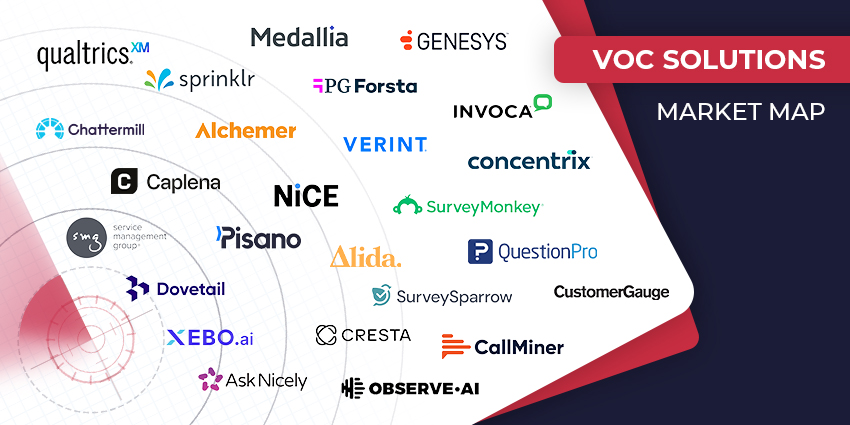Zurich Insurance Group is on a mission to create more meaningful customer relationships.
That mission started by fixating on the customer engagement points that make or break loyalty.
“In insurance, there aren’t many points of interaction,” explained Conny Kalcher, Chief Customer Officer at Zurich Insurance Group.
23 percent of customers claim they have not had an interaction with us in the past 12 months. That’s why, whenever we do interact, it has to matter.
Recognizing this, Kalcher & Co. set 33 CX standards to ensure that Zurich delivers enhanced experiences at these crucial customer touchpoints.
The 33 Standards: How Zurich Insurance Group Isolated Them
Last year, Zurich analyzed 1.6 million pieces of customer feedback responses to identify customer pain points.
From there, it mapped out end-to-end customer journeys – including documents, conversations, and touchpoints – to isolate those issues.
Given the siloed nature of most enterprises, departments typically only see parts of the process and are often unaware of particular pain points.
Customer journey mapping exercises help broaden perspectives.
“When people from different business areas look at that mapped-out journey, they start noticing issues they couldn’t see before,” said Kalcher. “And once they’ve seen them, they can’t unsee them—they naturally want to fix them.”
It might be as simple as realizing that a letter should use a different tone and language. Whatever the case, Zurich – leveraging “Smaply” as a tool – delivered greater realization across the organization about what it can and needs to do better.
Ultimately, that led to the development of new standards and created buy-in. Yet, it also flipped the CX conversation. As Kalcher noted:
It’s not just about the product or the brand anymore; it’s about the entire experience being cohesive.
Key Examples of the 33 Standards
The 33 standards not only help to bind departments, but they also make the concept of customer-centricity seem real and actionable for the organization.
Instead of telling people to “focus on the customer”, the standards define what that actually means.
For instance, one standard is that a conversation should always start where the last one ended. That stemmed from recognizing how customers detest repeating information when interacting with different parts of the organization.
Another standard is that it should always be easy for customers to contact Zurich. “We don’t want to bury our phone numbers deep in the website and push people to self-service options,” said Kalcher.
A final example is offering choices in communications. “We’ve segmented our customer base and know that some customers just want speed and efficiency, while others value the human touch. So, we aim to offer both options to match different preferences.”
Each standard is not based on what Kalcher and her team think the experience should be. Rather, it’s directly based on what customers have told Zurich needs improvement.
That’s critical, as in customer experience management (CXM) sessions, improvement ideas often stem from preconceived notions from the loudest individuals in the room.
As the standards are steeped in customer feedback, Zurich can take a more data-driven approach.
How Zurich Is Measuring Its Success
Like many other brands, Zurich monitors a transactional net promoter score (tNPS).
However, it doesn’t stop there. The company also reaches out to respondents with “driver questions” to gain insight into their scores.
As such, it unpacks quantitative data to monitor over time but also open insights into what’s irritating detractors and exciting promoters.
From there, it can run analytics, spot trends in open feedback, and gauge the success of actions taken to meet the CX standards.
Of course, that’s an ongoing process. Yet, there are signs that it’s working.
Over the past two years, Zurich has experienced a seven percent uptick in tNPS. It also partially credits its strategy with a three percent rise in “product density”. This metric monitors the number of products a customer holds.
However, Zurich doesn’t only benchmark internally. “We track how well the market is improving against these standards every year,” said Kalcher.
Currently, 67 percent of our standards globally are at or above market level, so we’re making progress, but we’re not done yet.
Zurich organizes a study to compare standards against competitors, cautioning that external reports may measure particular metrics differently and deliver less reliable data.
Looking Ahead…
Zurich Insurance Group is just one facet of Zurich’s business.
However, following its success with CX Standards, other parts of the organization are considering how to replicate the strategy.
Already, Zurich’s commercial insurance business has taken a similar approach, isolating 18 global standards to solidify customer relationships.
As others take note, Zurich is making the knotty concept of customer-centricity more tangible.
Learn more from CX practitioners and experts. Subscribe to the CX Today Newsletter.







